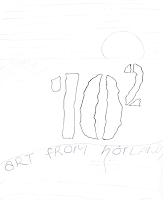Group Exercise Pt1:
QUIZ & open discussion
Q1. Relatives - A doctor in London had a brother in Manchester, who was a lawyer - but
the lawyer in Manchester did not have a brother in London who was a doctor. Why?
The doctor is a women
Q2. Bottled Money - If you put a small coin piece in an empty bottle and replaced the
cork, how would you get the coin out of the bottle without taking out the cork or breaking
the bottle?
Push the cork inside the bottle and tip out the coin
Q3. The Restaurant Meal - Three women each have two daughters, and they all go into a
restaurant for a meal. There are only seven vacant seats in the restaurant, but each has
a seat for herself. How do they manage it?
There is 1 grandma and her two daughters that each have two daughters = 7
Group Exercise Pt2:
MIKE’S AUDITION
Have you ever been in Los Angeles freeway traffic? We were once in bumper‐to‐bumper traffic, trying to get to the airport at 10:30 at night. I didn't know that there were traffic jams until late in the evening.
In any case, if you have had a similar experience, you can relate to the following problem, which will show us how challenging assumptions leads to more creative solutions.
Mike had an audition for a movie role at eight the next morning. But it was in Hollywood, and he lived on the other side of Los Angeles. He was notified of the audition late, and now it was one in the morning.
This was a problem, because it could take as much as four hours to get through the morning traffic, and he needed time to shower and get ready. He would have to get up by a little after three that morning.
He thought about this. Just two hours of sleep, followed by hours on the freeway ‐ this might affect his performance. This would be his first important role if he was hired, so his mind started scrambling for solutions. Taking the bus might be faster than driving his van, but he didn't know the bus schedules, and it was too late to find out. He looked at a map of the city, hoping for a better route, and he might have found one, but it seemed dangerous to guess about routes he wasn't familiar with at this point.
He suddenly recalled a problem solving technique his friend Steve had told him about, and decided to try it. He did the assumption‐challenging exercise, starting with a pen and piece of paper and writing a list of assumptions.
What would be on your list of assumptions ‐ if you were Mike?
- Have to sleep before he leaves
- Traffic always takes 4 hrs regardless time of day/night
- Sleep in the taxi
Challenge each item in the list and find a solution to Mike’s problem
- Drive first so there will be no traffic and sleep then shower just before audition
Practical
Choose your most recent concept, make two assumptions and challenge each of these then find a solution.
Poster concept:
Assumption 1: I will use images to portray my concept
Assumption 2: Small amount of text will be used to address certain aspects
Challenge Images:
I have the idea to use the background image of Cristo Rei but I could use the traditional Timor house or images of locals. Because it is a poster to promote tourism I want to use images of unique things of Timor.
I have already taken photos that I can use however they are going to need some tweaking in Photoshop. Also what size do I want this thing printed on? I am going to have to talk with and research what size would be good and will stand out. I need to research this because I read in “Design as Art” Bruno Munari, that you could design something really well and have it printed at a large size and have it stand out in your office but when in a room or space that the poster needs to compete for attention you need to consider colour and size.
Challenge text:
There will be text some of which will be in Tetum and English. Should only be little amount of text on the poster. Wont use large catchy heading like most posters because the size and impact of Cristo Rei speaks for itself. Could be text on little images that will be in polaroids and have some hand written font text on it. Could use a font that complements Timor Air’s logo.
Solutions:
Using the Timor house or images of scrubber diving wont give it “wow” factor as the first thing that catches you eye because not many people know what a traditional Timor house look like and scrubber diving could be advertising any where. By using the Cristo Rei it appeals to more because a lot of people are Catholic/Christian and there is only one other Jesus statue in the world bigger than Timor’s.
Using Tetum words “Mai Timor” (come to Timor) invites and intrigues the audience because even though they do not understand the word “mai” they will recognise “Timor” and usually assume the partnered word is a invitation. One example sketch of a poster
Here is an image I found advertising Timor.
Reference(http://easttimortourismassociationnews.blogspot.com/)
Looking at this image there is so many smaller images all fighting for attention. Your eyes don't seem to know where to look first and even though they are all images relating to Timor and what makes Timor special, the individual images don't relate to each other. Also there is no consistency in colour. These are things I need to keep in mind when designing the layout of my poster.
"That's all I have to say about that. " Forest Gump...














